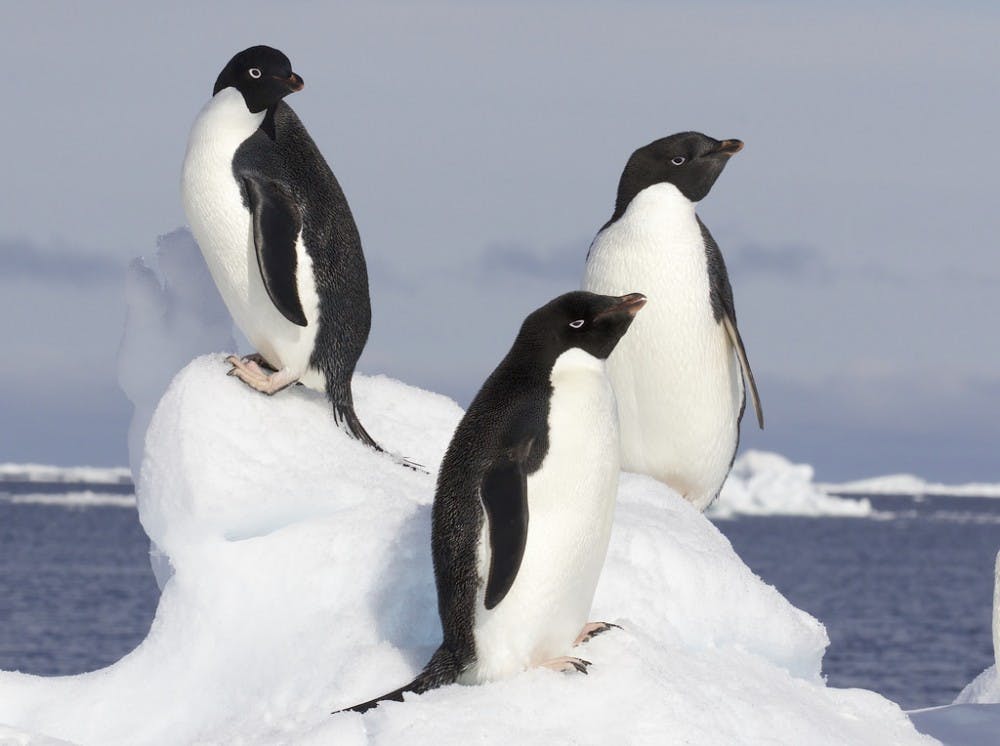Over the last several decades, scientists have noticed a steady decline in one of Antarctica’s most treasured inhabitants — the Adélie penguin. These penguins reside exclusively along the Antarctic coast, along with the emperor penguin.
However, a recent study published on March 2 in the journal Scientific Reports states that a supercolony of over 1.5 million Adélie penguins has been found in a group of islands off the tip of the Antarctic Peninsula. These islands, known as the Danger Islands, were thought to be remote, housing no more than a few species of seabirds and seals.
The Danger Islands are hard to reach because of the choppiness of the ocean that surrounds them. However, in 2014, co-principal investigator (co-PI) of the investigation Heather Lynch, associate professor of ecology and evolution at Stony Brook University, and her colleague Mathew Schwaller from NASA discovered guano, or seabird poop stains, in NASA satellite images. These guano stains hinted at a large population of penguins.
In 2015, researchers at the Woods Hole Oceanographic Institution (WHOI) then set out to determine just how many penguins resided on these islands. To tally the penguins, the researchers used strategies such as hand-counting, drone images and a computerized counting program that analyzed photos to pick out penguin nests.
“The drone lets you fly in a grid over the island, taking pictures once per second. You can then stitch them together into a huge collage that shows the entire landmass in 2D and 3D,” co-PI Hanumant Singh, professor of mechanical and industrial engineering at Northeastern University, said according to WHOI.
Singh, who developed the drone, said that the information provided by the drone helped to search for penguin nests automatically.
Using these methods, the team came up with a final estimate: 751,527 penguin pairs. This meant there were more than 1.5 million penguins.
“The population of Adélie on the east side of the Antarctic Peninsula is different from what we see on the west side,” study co-author Stéphanie Jenouvrier, a seabird ecologist at WHOI, said according to WHOI. “Is it linked to the extended sea ice condition over there? Food availability? That’s something we don’t know.”
Co-author Michael Polito from Louisiana State University and guest investigator at WHOI states that this discovery is important for investigating climate change and population dynamics.
“Not only do the Danger Islands hold the largest population of Adélie penguins on the Antarctic Peninsula, they also appear to have not suffered the population declines found along the western side of Antarctic Peninsula that are associated with recent climate change,” Polito said, according to WHOI.
WHOI is currently trying to recognize the Danger Islands as a marine protected area (MPA) by the International Commission for the Conservation of Antarctic Marine Living Resources. MPAs are regions where the only human activity allowed is for conservation purposes.





